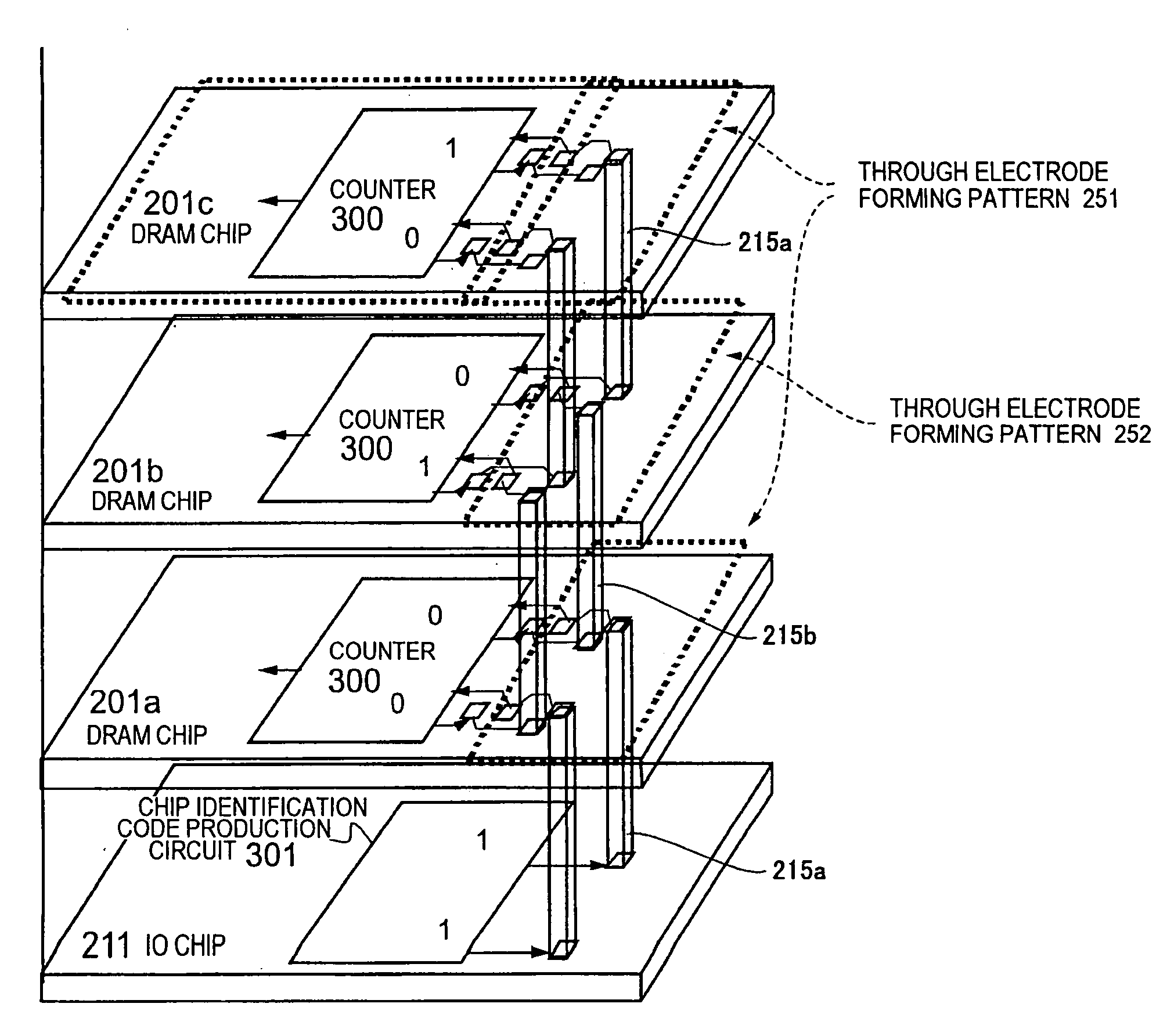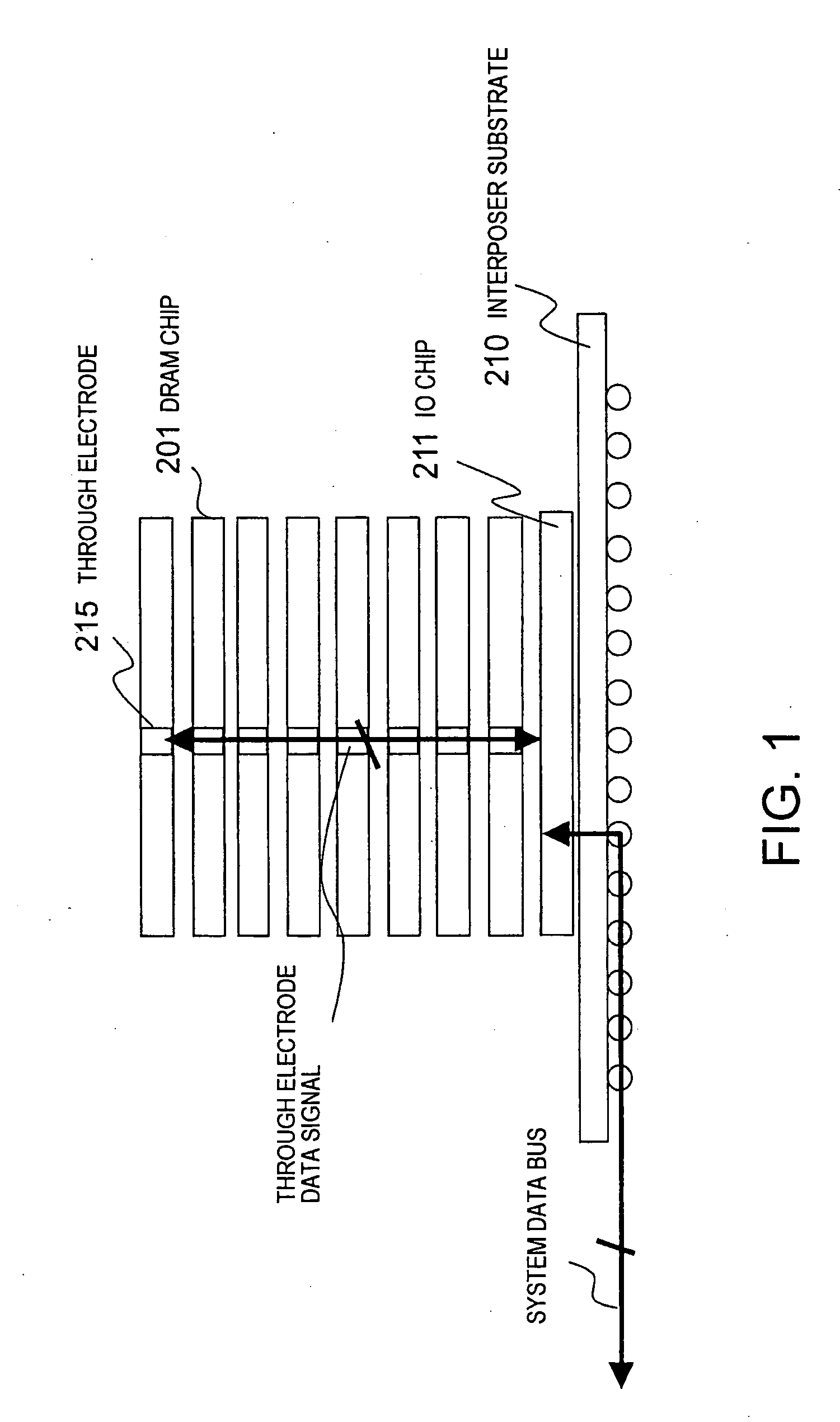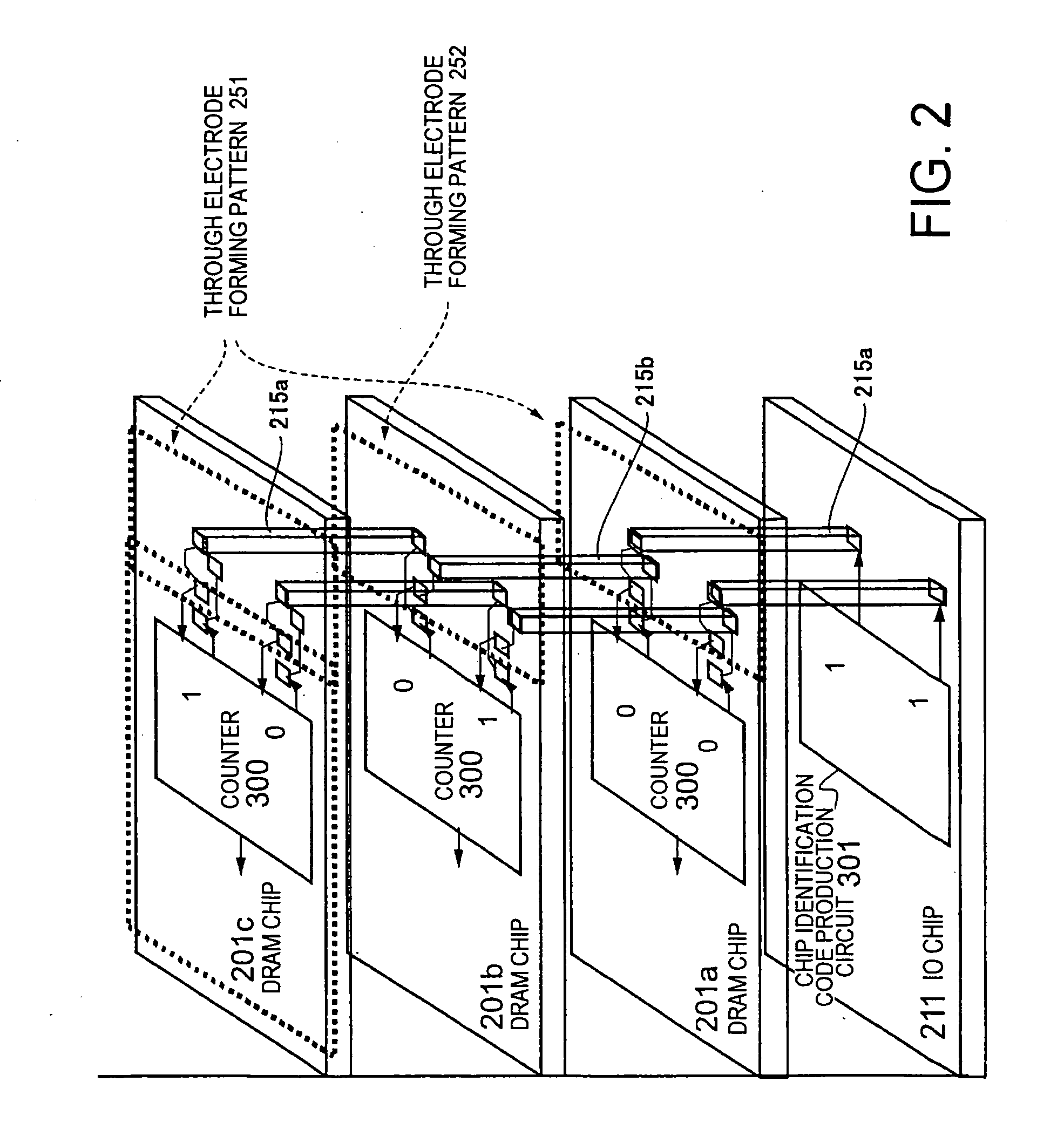Memory module and memory system
a memory module and memory technology, applied in the field of memory systems, can solve the problems of plurality of dram chips, mounting substrates, and inability to meet the requirements of high data rate of 12.8 gbps in the memory module of the next generation, and achieve the effect of high ra
- Summary
- Abstract
- Description
- Claims
- Application Information
AI Technical Summary
Benefits of technology
Problems solved by technology
Method used
Image
Examples
first embodiment
[0099] Referring to FIG. 1, a memory module according to the present invention is shown. The memory module shown in FIG. 1 is capable of inputting / outputting a data signal corresponding to a data width of a plurality of DRAM chips as a memory data bus width in the same manner as in the memory module shown in FIG. 40. The memory module shown in FIG. 40 can be formed in a stacked structure shown in FIG. 1 in this manner to constitute a memory system including a plurality of memory sub-systems in the whole memory system and having a data rate of 12.8 GBps in each memory sub-system and capable of increasing a memory capacity by expansion and reducing a mounting area.
[0100] The shown memory module comprises an interposer substrate 210, an IO chip 211 mounted on the interposer substrate 210, and eight DRAM chips 201 stacked on the IO chip 211. Here, first to eighth DRAM chips will be referred to upwards from the DRAM chip of a lowermost layer adjacent to the IO chip 211. The memory module...
second embodiment
[0114] The memory module according to the present invention will be described with reference to FIG. 2. Each DRAM chip 201 shown in FIG. 2 comprises a counter circuit 300 which produces a collation signal with which a control signal or an address signal transmitted from the IO chip 211 is collated to receive a signal, and a chip identification code production circuit 301 is disposed in the IO chip 211.
[0115] Furthermore, as shown in FIG. 2, DRAM chips 201a and 201c comprises the same through electrode forming pattern 251. On the other hand, a DRAM chip 201b comprise a through electrode forming pattern 252 different from the through electrode forming pattern 251 of the DRAM chips 201a and 201c. The IO chip 211 is connected to the through electrode forming pattern 251 of the DRAM chip 201a by through electrodes 215a, the DRAM chip 201a is connected to 201b by through electrodes 215b, and further the DRAM chip 201b is connected to 201c by the through electrodes 215a. Only two through e...
third embodiment
[0160] Referring to FIG. 16, the memory module according to the present invention is shown. The memory module can have a memory capacity equal to that of a conventional 2-rank memory module. For the shown memory module, a constitution suitable for a case where two DRAM chips 201 are simultaneously objects of access is shown.
[0161] Specifically, for the memory module, two IO chips 211a and 211b mounted on the interposer substrate (not shown), and four layers of DRAM chips 201a, 201b on the IO chips 211a, 211b are stacked, and the DRAM chips 201a, 201b on the respective IO chips 211a and 211b are simultaneously accessed one by one to constitute a 2-rank memory module. In this case, the data signals of x256 bits are transmitted / received between the simultaneously accessed DRAM chips 201a, 201b and IO chips 211a and 211b, and the system data signals of x32 bits are transmitted / received between the respective IO chips 211a and 211b and the chip set. In the drawing, a pair of DRAM chips 2...
PUM
 Login to View More
Login to View More Abstract
Description
Claims
Application Information
 Login to View More
Login to View More - R&D
- Intellectual Property
- Life Sciences
- Materials
- Tech Scout
- Unparalleled Data Quality
- Higher Quality Content
- 60% Fewer Hallucinations
Browse by: Latest US Patents, China's latest patents, Technical Efficacy Thesaurus, Application Domain, Technology Topic, Popular Technical Reports.
© 2025 PatSnap. All rights reserved.Legal|Privacy policy|Modern Slavery Act Transparency Statement|Sitemap|About US| Contact US: help@patsnap.com



